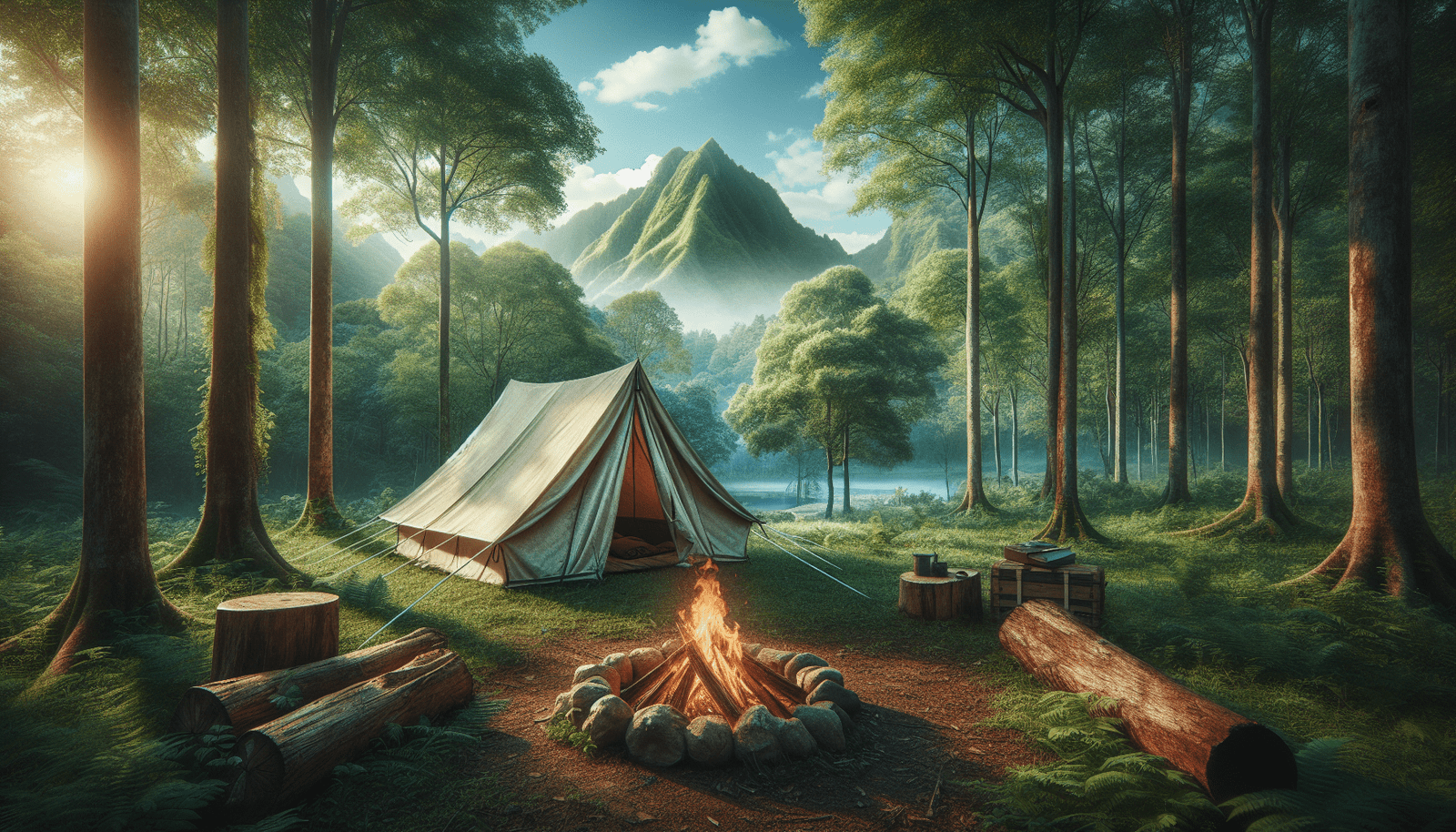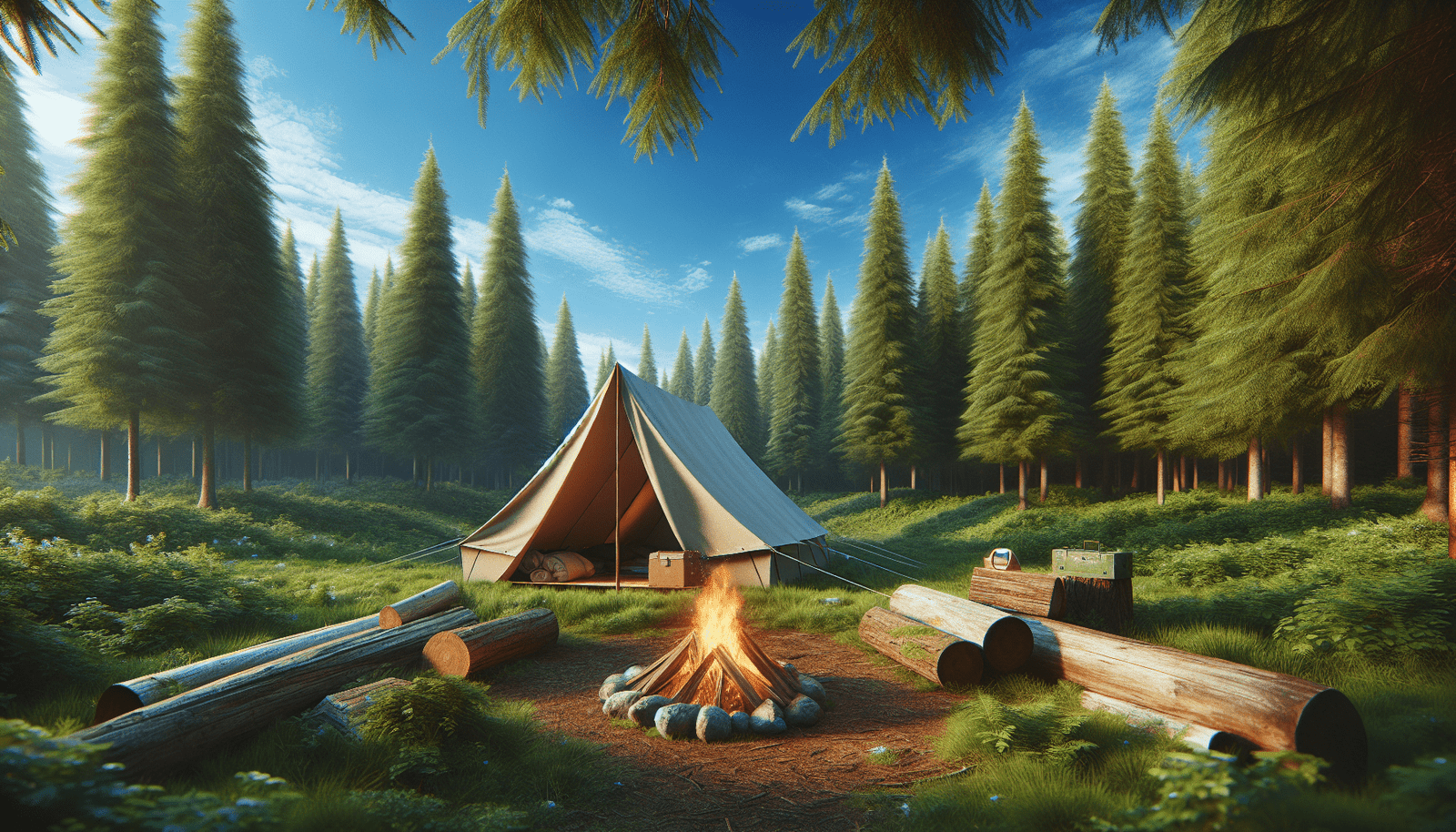You’re planning an adventure and someone mentions “standard camp.” What exactly does that mean? Standard camp is your go-to experience for a traditional camping trip, providing all the essentials you need to enjoy the great outdoors. You’ll discover what equipment to pack, popular campsite locations, and the typical activities you can expect. Dive into this guide to ensure your next camping trip is both fun and safe, so you can create memories under the stars with confidence.
What Is Standard Camp?
Have you ever wondered what sets standard camp apart from other types of camping experiences? Whether you’re a seasoned camper or considering your first outdoor adventure, understanding the concept of standard camp can enhance your preparation and enjoyment.
Standard camping is a term often used interchangeably with traditional or primitive camping. Unlike specialized camps (such as glamping or RV camping), standard camp focuses on the basics. Let’s delve into what makes standard camp unique, what you can expect, and how to prepare for your trip.

Understanding the Concept of Standard Camp
So, what exactly is standard camp? At its core, standard camp offers a more traditional camping experience. This typically means pitching a tent in a designated camping area, cooking meals over a campfire, and engaging in classic outdoor activities like hiking and fishing.
Basic Elements of Standard Camping
Simplicity and Minimalism
Standard camp focuses on simplicity. You’re stripped of modern conveniences and find joy in the basic comforts of life. This minimalistic approach encourages you to reconnect with nature and those around you.
Outdoor Skills
Standard camping encourages the development of essential outdoor skills. From setting up a tent to starting a fire, these activities offer a rewarding hands-on experience that isn’t often found in everyday life.
Communes with Nature
Standard camp is all about immersing yourself in a natural environment. It allows you to disconnect from the daily grind and reconnect with the beauty of the wilderness.
Types of Standard Camps
There are different ways to approach standard camping. Depending on your preferences and experience level, you can choose from the following types:
| Type of Standard Camp | Description |
|---|---|
| Backpacking | Carrying all your gear in a backpack to stay mobile and explore different terrains |
| Car Camping | Driving to your campsite, allowing for more gear and comfort |
| Tent Camping | The most traditional form involving tents, and usually located at designated campgrounds |
| Primitive Camping | Campsites with no amenities, promoting a more rugged and self-sufficient experience |
Backpacking
Backpacking involves carrying all your gear in a backpack. It allows you to explore a variety of terrains and locations. This type of camping is ideal for those who love trekking through the wilderness.
Car Camping
Unlike backpacking, car camping involves driving your vehicle to your campsite. This allows you to bring more gear, making it more comfortable for those who may not be ready to ‘rough it’ entirely.
Tent Camping
The most traditional form of standard camping, tent camping usually takes place at designated campgrounds. These campgrounds can offer various amenities but still focus on the basic camping experience.
Primitive Camping
Primitive camping is for the more adventurous. These campsites offer little to no amenities, encouraging you to rely on your resourcefulness and skills.
Essential Camping Gear
Your experience in a standard camp largely depends on the gear you bring along. Below is a comprehensive list of essential items to consider for a successful camping trip:
| Gear Category | Essential Items |
|---|---|
| Shelter | Tent, stakes, tarp, sleeping bags, sleeping pad |
| Cooking Equipment | Portable stove, fuel, cookware, utensils, cooler |
| Clothing | Weather-appropriate clothes, boots, hat, gloves |
| Navigation Tools | Map, compass, GPS, altimeter |
| Safety Gear | First aid kit, emergency whistle, multi-tool, insect repellent |
| Hydration | Water bottles, water filter, purification tablets |
| Lighting | Flashlight, headlamp, extra batteries |
| Miscellaneous | Toiletries, sunscreen, camera, trash bags |
Shelter
Your shelter is your home-away-from-home. A good-quality tent, along with stakes and a tarp for additional protection, is essential. Sleeping bags and pads will ensure you get a comfortable rest.
Cooking Equipment
Bringing along the right cooking gear can significantly enhance your camping experience. A portable stove, fuel, and basic cookware such as pots, pans, and utensils will help you prepare those delicious campfire meals.
Clothing
Weather can be unpredictable, so always pack weather-appropriate clothing and durable boots. Consider adding protective accessories like hats and gloves depending on the forecast.
Navigation Tools
Even if you’re camping in a designated area, it’s wise to have navigation tools like a map, compass, or GPS device. These will help you explore your surroundings safely.
Safety Gear
Safety should be a high priority. A first aid kit is essential, along with items like an emergency whistle, multi-tool, and insect repellent.
Hydration
Staying hydrated is crucial. Make sure you have enough water bottles and consider carrying a water filter or purification tablets if you’ll be camping far from clean water sources.
Lighting
Having good lighting is important for both convenience and safety. Flashlights and headlamps are essential, and don’t forget to bring extra batteries.
Miscellaneous
Other useful items include toiletries, sunscreen to protect against UV rays, a camera to capture memories, and trash bags to keep your campsite clean.
Common Activities in Standard Camps
One of the joys of standard camp is the variety of activities you can engage in. These activities can make your camp experience more memorable and enjoyable.
| Activity | Description |
|---|---|
| Hiking | Exploring trails and admiring nature’s beauty |
| Fishing | Relaxing by the water and trying to catch your dinner |
| Swimming | Taking a dip in nearby lakes or rivers |
| Campfire | Gathering around the fire for cooking, storytelling, and bonding |
| Wildlife Watching | Observing animals in their natural habitat |
| Stargazing | Enjoying the night sky, free from city lights |
| Photography | Capturing nature’s beauty with your camera |
| Outdoor Games | Engaging in games like frisbee, badminton, or scavenger hunts |
Hiking
Exploring trails through hiking is a staple of standard camp. It’s a fantastic way to immerse yourself in the natural surroundings and find tranquility.
Fishing
If you’re near a body of water, fishing can be both relaxing and rewarding. Plus, you might catch your dinner!
Swimming
Many campgrounds are located near lakes or rivers, making swimming an accessible and fun way to cool off and enjoy the water.
Campfire
No standard camp experience is complete without a campfire. It’s perfect for cooking, storytelling, and bonding with your campmates.
Wildlife Watching
Camping offers a unique opportunity to observe wildlife in their natural habitat. Whether you’re watching birds or tracking deer, it can be an educational and fulfilling experience.
Stargazing
One of the delights of camping far from city lights is the ability to stargaze. Lying under a sky full of stars can be a humbling and awe-inspiring experience.
Photography
The beauty of nature provides endless opportunities for photography. Capture these moments to cherish and share with friends and family.
Outdoor Games
Engaging in outdoor games can add a playful and competitive edge to your camping experience. Games like frisbee, badminton, or scavenger hunts are perfect for all ages.

Planning Your Camping Trip
Preparation is key to a successful camping trip. Here are some key steps to plan and prepare for your standard camp adventure:
Selecting the Campsite
Finding the right campsite is crucial. Consider factors such as location, amenities, and the type of camping experience you want. Research and book your site in advance, especially during peak seasons.
Checking the Weather
Always check the weather forecast before your trip. This helps you pack appropriate clothing and gear, and even prepare for potential changes in plans due to inclement weather.
Packing Efficiently
Pack light but don’t leave out the essentials. Make a checklist of all the gear you need and double-check everything before heading out.
Meal Planning
Plan your meals ahead of time. Choose simple, non-perishable foods that are easy to cook over a campfire or portable stove. Don’t forget to pack snacks and plenty of water.
Safety Precautions
Always prioritize safety. Let someone know where you’ll be camping and your expected return date. Familiarize yourself with the local wildlife and potential hazards.
Leave No Trace
Practice Leave No Trace principles to protect the environment. This includes picking up litter, respecting wildlife, and minimizing your impact on the natural surroundings.
Benefits of Standard Camping
Camping, especially standard camping, comes with numerous benefits. Here are some of the key advantages:
Physical Health
Camping usually involves physical activities such as hiking, swimming, and setting up your camp, which can improve your overall physical health.
Mental Health
Being in nature has been proven to reduce stress, anxiety, and depression. The tranquility and beauty of the outdoors can have a profound effect on your mental well-being.
Skill Development
Camping helps you develop a variety of skills, from navigation and survival skills to cooking and problem-solving.
Quality Time
Whether you’re camping alone, with family, or friends, it provides an opportunity to connect on a deeper level free from distractions.
Frequently Asked Questions (FAQs)
What is the difference between standard camping and glamping?
Standard camping is a traditional experience focusing on minimal amenities, while glamping (glamorous camping) offers more luxurious accommodations like furnished tents, electricity, and sometimes even plumbing.
Can beginners enjoy standard camping?
Absolutely! Beginners may find car camping or tent camping at designated campgrounds a more accessible introduction to standard camping.
How do I choose the right tent?
Select a tent based on the number of people it needs to accommodate, weather conditions, and your budget. Ensure it’s easy to set up and durable.
Is it safe to camp alone?
Camping alone can be safe if proper precautions are taken. Inform someone of your plans, carry safety gear, and choose campsites that are not too remote.
What should I do if I encounter wildlife?
Maintain a safe distance from wildlife, store food securely to avoid attracting animals, and follow local guidelines on human-wildlife interactions.
How do I purify water while camping?
Water purification can be done using filtration systems, boiling water, or chemical treatments like purification tablets. Always ensure water from natural sources is purified before consumption.
Final Thoughts
Understanding what standard camp entails can significantly enhance your outdoor experience. It’s a form of camping that takes you back to basics, allowing you to appreciate the simple joys of life. Whether you’re looking to develop new skills, reconnect with nature, or simply escape the hustle and bustle, standard camp offers an enriching experience for everyone.
So, the next time you’re itching for an adventure, consider a standard camping trip. With the right preparation and mindset, it’s bound to be an unforgettable experience. Happy camping!
